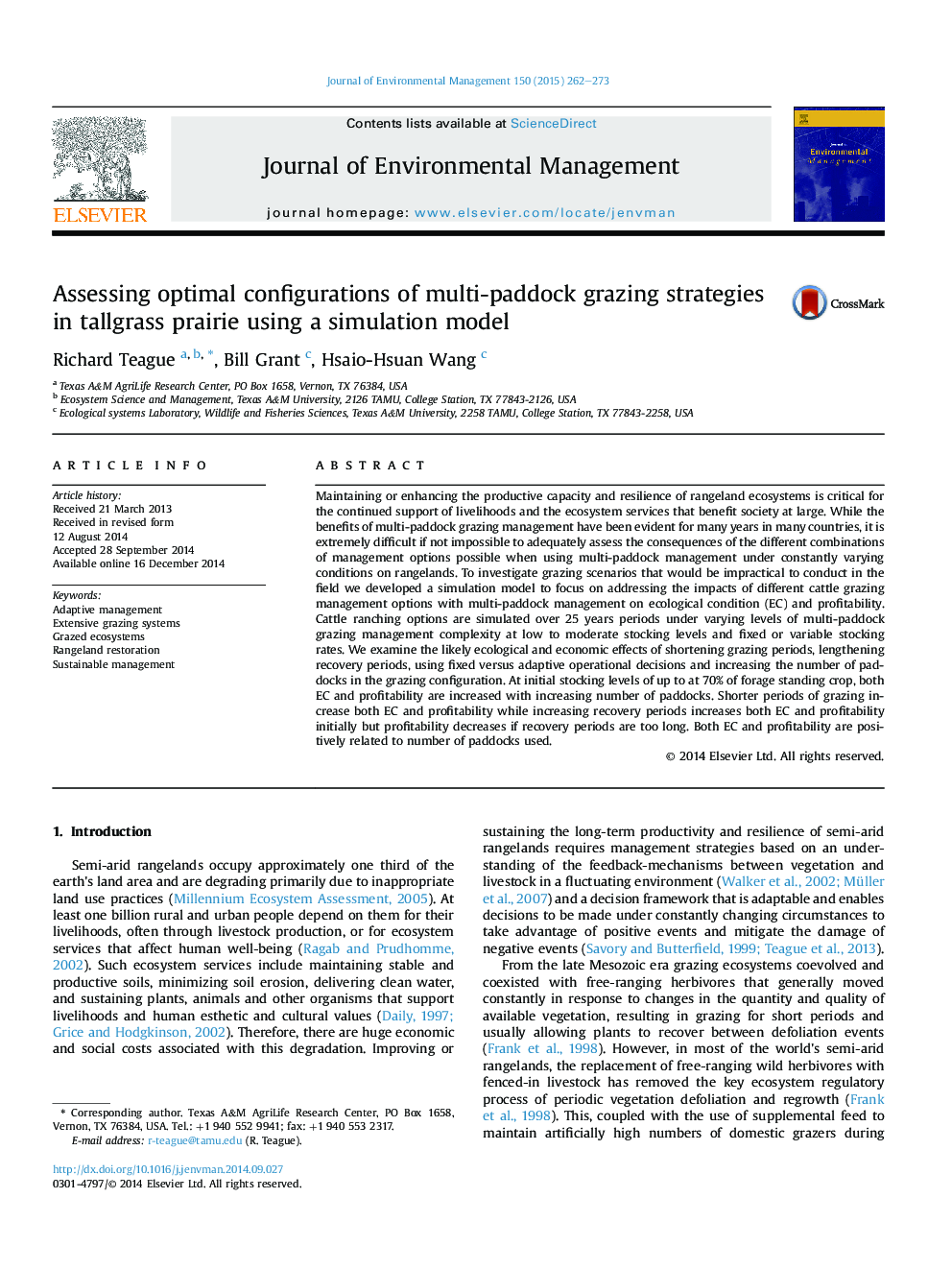| Article ID | Journal | Published Year | Pages | File Type |
|---|---|---|---|---|
| 7482817 | Journal of Environmental Management | 2015 | 12 Pages |
Abstract
Maintaining or enhancing the productive capacity and resilience of rangeland ecosystems is critical for the continued support of livelihoods and the ecosystem services that benefit society at large. While the benefits of multi-paddock grazing management have been evident for many years in many countries, it is extremely difficult if not impossible to adequately assess the consequences of the different combinations of management options possible when using multi-paddock management under constantly varying conditions on rangelands. To investigate grazing scenarios that would be impractical to conduct in the field we developed a simulation model to focus on addressing the impacts of different cattle grazing management options with multi-paddock management on ecological condition (EC) and profitability. Cattle ranching options are simulated over 25 years periods under varying levels of multi-paddock grazing management complexity at low to moderate stocking levels and fixed or variable stocking rates. We examine the likely ecological and economic effects of shortening grazing periods, lengthening recovery periods, using fixed versus adaptive operational decisions and increasing the number of paddocks in the grazing configuration. At initial stocking levels of up to at 70% of forage standing crop, both EC and profitability are increased with increasing number of paddocks. Shorter periods of grazing increase both EC and profitability while increasing recovery periods increases both EC and profitability initially but profitability decreases if recovery periods are too long. Both EC and profitability are positively related to number of paddocks used.
Related Topics
Physical Sciences and Engineering
Energy
Renewable Energy, Sustainability and the Environment
Authors
Richard Teague, Bill Grant, Hsaio-Hsuan Wang,
